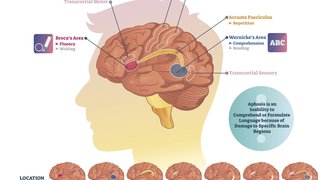
Seizures affect brain function, such as memory. Over the long term, uncontrolled seizures can spread to involve more areas of the brain, so controlling them is paramount. Epilepsy surgery can completely eliminate seizures in some patients, which no other epilepsy treatment today can claim. Unfortunately, many people who qualify for surgery never receive a surgical evaluation, or the evaluation is delayed for years because of a patient’s or physician’s hesitation to consider surgery.
Research published in January 2017 illustrated the importance of not delaying a surgical evaluation. It showed that 58 percent of people who had surgery were seizure-free after five to 10 years, compared with 17 percent who did not have surgery. The study suggests that the longer a person has epilepsy, the less likely he or she will benefit from surgery.
Epilepsy surgery has long been considered a “last resort” treatment after multiple, unsuccessful attempts to control seizures with medication. Yet while surgical procedures are not yet our initial treatment recommendation, technological advancements have made brain surgery for epilepsy a safer, more effective, and less-invasive treatment option for patients who meet certain criteria.
Who is a candidate for epilepsy surgery?
Patients who meet the following criteria might benefit from surgical evaluation:
- Seizures start in one area of the brain: Through imaging and a review of the patient’s seizure history, we can tell if the seizures originate from one specific area of the brain, a condition known as focal onset epilepsy. Surgery for this type of seizure has the highest rate of cure. If the seizures originate from multiple areas of the brain, surgical options are more limited.
- Medications are ineffective: If a patient has tried two or three medications without success, the individual is considered to have intractable epilepsy and might benefit from surgery.
Research has shown that if the first couple medications a patient with epilepsy tries do not work, it’s increasingly unlikely that further drugs will be effective. A 2012 study found that 50 percent of trial participants were seizure-free after trying one drug, 13 percent after a second, and 4 percent after a third.
Epilepsy surgery requires a multidisciplinary team of surgeons, radiologists, neuropsychologists, and specialized nurses. Not all patients will benefit from surgery, and every case must be carefully examined to weigh the rare but potentially serious risks of each procedure with the possible benefits.
Advancements in epilepsy surgery
New imaging techniques and advanced surgical procedures have reduced the risk of complications and side effects from epilepsy surgery to all-time lows. Four major advancements have greatly improved our ability to successfully treat patients with epilepsy surgery:
Stereoelectroencephalography (stereo EEG)
Stereo EEG allows us to better pinpoint where seizures come from. We are one of few centers in the U.S. to use this minimally invasive “brain mapping” approach. Using stereo EEG, we can operate on the exact area of the brain affected by epilepsy and avoid adjacent tissue that controls vital functions such as vision and speech.
To perform stereo EEG, we place electrodes in the patient’s brain that we observe in our Epilepsy Monitoring Unit for about a week. Once we locate the source of seizures, we remove the electrodes and determine from the data whether a patient is a good a candidate for epilepsy surgery and which procedure might be most effective.
Responsive neurostimulation
This type of neurostimulation can prevent or disrupt seizures by sending electrical pulses to the brain. We implant electrodes connected to a computer chip in the area of the brain that is causing seizures. Then we analyze the patient’s brain waves and deliver stimulation just as a seizure begins.
Early trials have shown seizure frequency reductions of 44 percent one year after the device was implanted, 53 percent after two years, and up to 66 percent after three years.
Laser interstitial thermal therapy
This is a type of laser ablation, a minimally invasive, targeted procedure in which we burn away targeted tissue in the affected area of the brain. We make a small incision in the scalp and guide a laser wire through a catheter to the affected brain tissue. Compared to standard resection surgery, laser interstitial therapy allows for faster recovery and causes fewer side effects.
Closed-loop neurostimulation
Though this breakthrough procedure is still in the trial phase, it shows promise for improving memory not only in epilepsy patients but also in individuals with other memory-reducing conditions. The procedure involves implanting a device in the brain that monitors and decodes neural activity. Preliminary data suggests that closed-loop neurostimulation can improve patients’ word recall by as much as 15 percent. This breakthrough has been developed by analyzing brain waves in patients with epilepsy.
Every patient with epilepsy deserves to live a high-quality, seizure-free life. If medication has not successfully controlled your patient’s seizures, please call us at 214-645-8300 or refer a patient online for a surgical evaluation.











